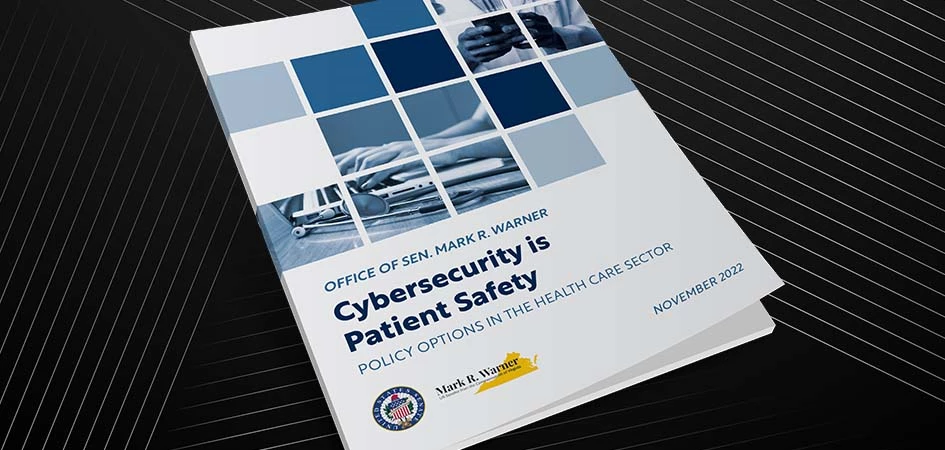U.S. Sen. Mark Warner (D-Va.) issued the 35-page report Cybersecurity on Patient Safety on November 3, which called the ongoing transition to better cybersecurity for the healthcare sector as being painfully slow and inadequate. This is despite the fact the healthcare sector is uniquely vulnerable to cyberattacks.
Warner said patient safety is directly tied to a healthcare facility’s cybersecurity capabilities and can no longer be treated as a secondary function, but must become incorporated into every organization’s business model.
The report noted that the healthcare sector is vulnerable to cyberattacks due to its reliance on legacy technology, having a wide and highly varied attack surface that grows larger every day as new medical IoT devices are added. The fact that most healthcare facilities are high-pressure environments where even the slightest delay can have life-or-death consequences, funding, and an outdated mode of thinking that views cybersecurity as a secondary or tertiary concern.
“Equally as important, cybersecurity policies and their implementation must start upstream to benefit all stakeholders downstream. Equipment must be designed and built with cybersecurity at its core, and regulations and government actions must account for cybersecurity at every step of the way,” Warner said in the report’s conclusion.
The report’s three sections address how Warner believes the federal government can help the healthcare industry reach this goal.
- Improving federal leadership and our national risk posture
- Improving healthcare providers’ cybersecurity capabilities through incentives and requirements
- Federal help with cyber emergency preparedness and recovery from cyberattacks
Trustwave’s 7 Steps to Secure a Healthcare Facility
- Improve Email Security – Email is the primary avenue used by threat actors to gain access to a network. Not just in healthcare but when attacking any organization. However, when it comes to healthcare, many attackers rely on business email compromise (BEC) as their primary weapon.
- Be Ready for Ransomware – Ransomware is potentially the most dangerous threat facing a healthcare facility, not just because it can damage or destroy expensive equipment. Such an attack can be lethal.
- Bolster IoT Device Defense – Modern healthcare facilities utilize a great deal of connected medical equipment, which means they are highly susceptible to Internet of Things (IoT) attacks.
- Harden Your Supply Chain – Suppliers and third-party partners also present a risk as outside entities often have access to or even house-protected health information (PHI), personally identifiable information (PII), and other protected information.
- Adhere to Password and Credential Best Practices – The need to maintain a strong password program is obvious by the number of stolen login credentials found for sale on the Dark Web. In addition to the previously mentioned system access being sold, Trustwave SpiderLabs found leaked emails with login credentials and stolen browser sessions that allow adversaries to log into the healthcare facility's website all being advertised on the Dark Web.
- Train Your Talent – All the best technology and processes however, are next to useless unless an organization properly trains its staff. The human element makes the difference between having a successfully defended perimeter and one that an attacker can breach.
- Test Your Defenses – Once your staff is as sharp as a spear and the technical side of the organization is locked down, the next step is to ensure it is working properly through testing.


Helping the healthcare industry remain safe and secure it a priority for Trustwave. Please contact our sales team or sign up for a demo at the link above.


